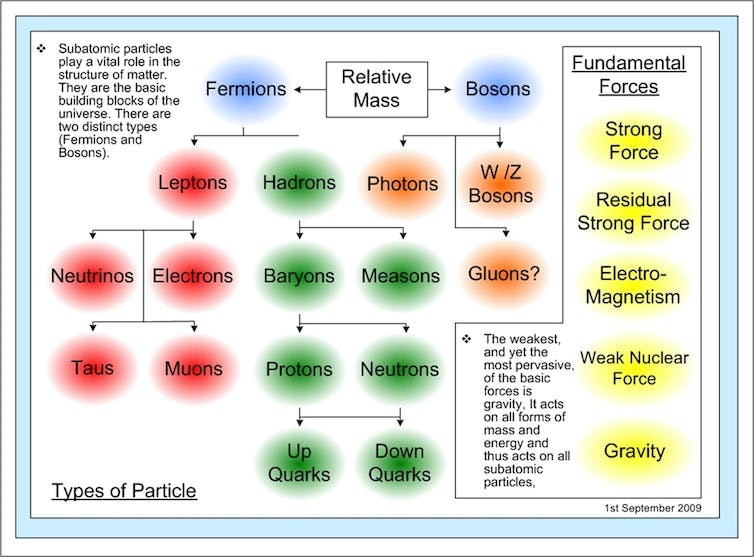08 Feb Muons Particles
Muons Particles
This article covers “Daily current affairs for UPSC” and the topic is about ‘Muons particles’ which are in news, it covers “Science and Technology” In GS-3, the following content has relevance for UPSC.
For Prelims: About Muons particles, types of particles
For Mains: GS-3, applications of muons particles
Why in news:
- The castle wall of Xi’an city, an old Chinese city, is being examined by scientists using muons, cosmic particles.
- They looked at the city wall of Xi’an using a muon detector called CORMIS (Cosmic Ray Muon Imaging System).
About Muons
- Subatomic particles known as muons fall from the sky. They are produced when high-energy particle clusters known as cosmic rays, which travel across space at a speed just below the speed of light, collide with particles in the Earth’s atmosphere.
- Atoms are the smallest units of matter and are composed of protons, neutrons, and electrons, which are referred to as subatomic particles.

Muons Particles
Electrons vs. Muons
- Muons are similar to electrons in structure but weigh more than 207 times as much, or about the same as a tiny elephant compared to an adult. As a result, they are occasionally referred to as “fat electrons”.
- Compared to electrons, which can only go through a few centimetres of material, These particles are so heavy that they can pass through hundreds of metres of rock or other material.
- Only for 2.2 microseconds do muons live before decomposing into an electron and two different types of neutrinos.
Muography
- Muography, also known as muon radiography, is a method that takes advantage of muons’ capacity to penetrate. The imaging of the internal structure of massive things is made possible by the measurement of their absorption in the matter.
- Muography is essentially similar to X-ray, but because of muons’ strong penetrating ability, it can scan considerably larger and wider structures.
- The only requirement is to position a muon detector underneath, inside, or next to the object of interest because these high-energy particles are naturally created and commonplace.
- When US experimental physicist and Nobel laureate Luis Alvarez worked with Egyptologists to look for secret rooms in the Pyramid of Khafre, Giza, the method was first employed in the late 1960s.
Applications
- In Archaeology: The method was originally applied in the late 1960s when Egyptologists and Nobel Prize-winning US experimental physicist Luis Alvarez worked together to look for secret rooms in the Pyramid of Khafre at Giza.
- However, contemporary archaeologists experimented again in 2017 using more powerful and advanced muon detectors and made an important discovery.
- The archaeologists were able to find a previously undiscovered room that was at least 30 metres long by deploying many detectors.
- Detecting Volcanic Eruptions: Using this method, researchers are attempting to fully comprehend the interior workings of the volcano. Data will be essential in determining what dangers to anticipate in a potential eruption.
- Nuclear Power Reactors: Muons can be used to inspect damaged nuclear power plants and detect radioactive substances. Following the earthquake and tsunami that hit Japan in 2011, scientists used the method to peer inside the Fukushima nuclear reactors.
- Applications include the study of superconductors, molecular systems and chemical reactions, innovative battery materials, and a variety of organic systems. Muons are also used in many other investigations.
Source:
Daily Current Affairs for UPSC
The topic is based on Muons Particles which is related to daily current affairs for the UPSC Examination. Plutus IAS provides you with such kinds of the best daily current Affairs related to science and technology for the UPSC examination free of cost. Also, get the weekly and monthly current affairs for IAS exam preparation from us.
Download the PDF now:




No Comments